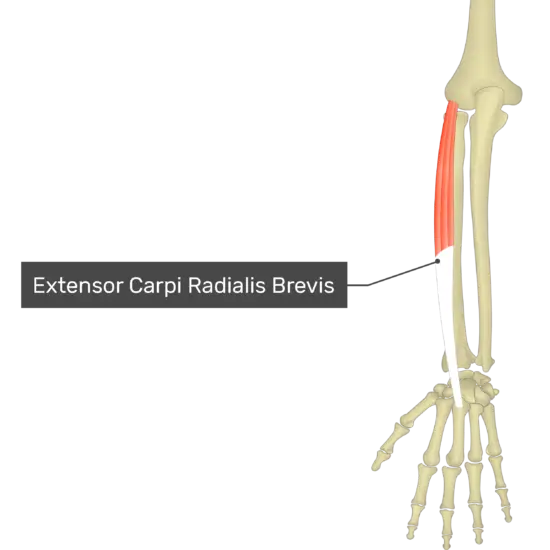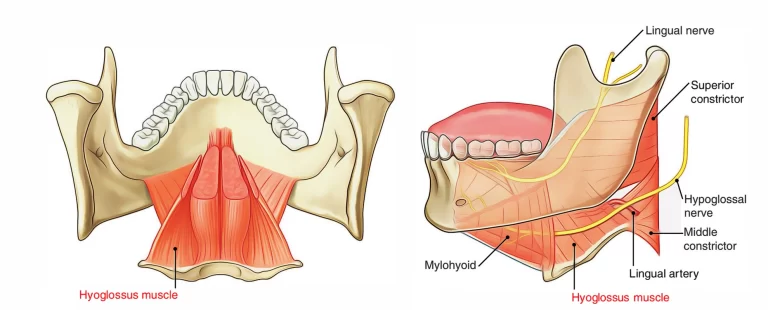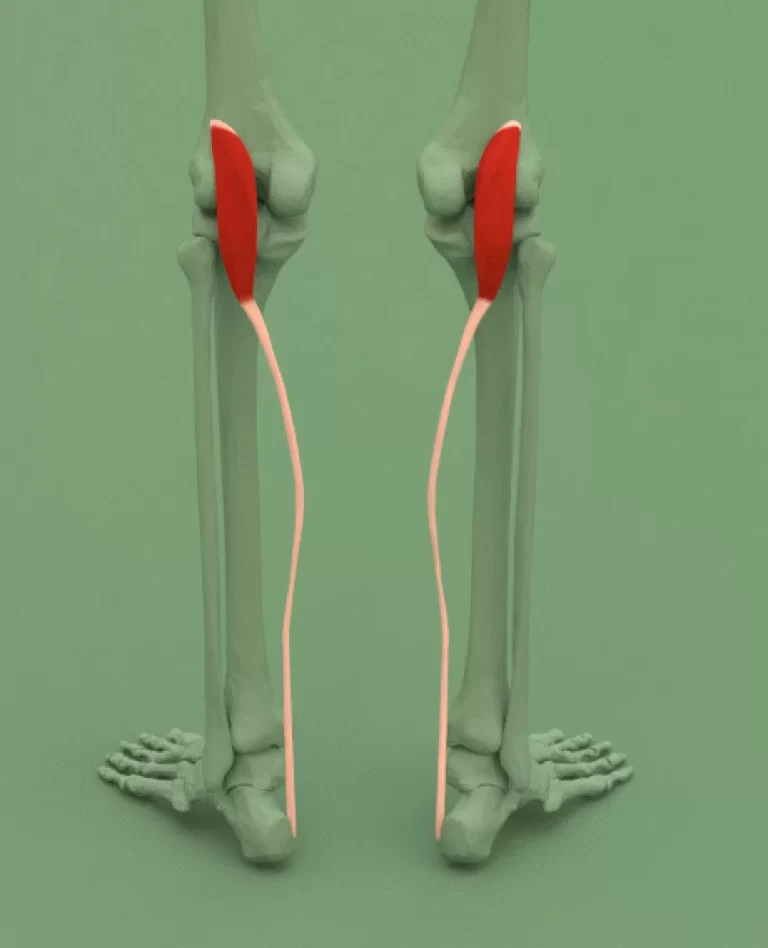Loxoprofen
Description
Loxoprofen is a nonsteroidal anti-inflammatory drug that belongs to the propionic acid derivatives class, which also includes naproxen and ibuprofen. In some nations, oral administration is available. An NSAID called loxoprofen is used to treat musculoskeletal conditions’ pain and inflammation.
- CAS ID: 68767-14-6
- Metabolism: Liver glucuronidation
- AHFS/Drugs.com: International Drug Names
- ATC code: M02AA31 (WHO)
- Elimination half-life: 75 minutes
- Generic Name – Loxoprofen
- Type – Small Molecule
- Groups – Approved
- Chemical Formula – C15H18O3
- Routes of administration: Oral, transdermal
Synonyms
- Loxoprofen
- Loxoprofene
- Loxoprofeno
- Loxoprofenum
Associated Conditions
- Musculoskeletal Pain
- Rheumatism
- Soft Tissue Injury
Background
Non-steroidal anti-inflammatory medication known as loxoprofen is derived from propionic acid. Sankyo markets it in Brazil, Mexico, and Japan as Loxonin, in India as Loxomac, and in Argentina as Oxeno. In January 2006, Japan approved the use of a transdermal preparation
What is Loxoprofen?
The main component of the Loxoprofen sodium 60mg compound and other excipients are included in the Loxoprofen 60mg medication. The medication is recommended for the treatment of chronic rheumatoid arthritis, osteoarthritis, and shoulder arthritis for pain relief and anti-inflammatory purposes. The medication is also used to treat neuralgia and mild to moderate pain or muscle pain.
Pharmacokinetics
A prodrug is loxoprofen. After being taken orally, it quickly changes into its active trans-alcohol metabolite and reaches its peak plasma concentration within 30 to 50 minutes.
Pharmacodynamics
Loxoprofen is a non-selective inhibitor of cyclooxygenase enzymes, which are responsible for the production of a category of biologically active pain, fever, and/or inflammatory mediators. Prostacyclin, arachidonic acid, prostaglandins, and thromboxane are a few examples of it.
Mechanism of action of Loxoprofen
Like the majority of nonsteroidal anti-inflammatory drugs (NSAIDs), loxoprofen works by reducing the synthesis of prostaglandins from arachidonic acid.
It is quickly metabolized to its trans-alcohol form, which is a potent and non-selective inhibitor of cyclooxygenase. Loxoprofen is a prodrug with little to no pharmacological activity. There are two forms of cyclooxygenase (COX), COX-1 and COX-2, each with distinct functions. Human cells contain COX-1, which is released continuously and is responsible for cellular housekeeping tasks like the production of mucus and platelet aggregation. COX-2 is triggered to appear in large quantities at the sites of injury or stimulus, is induced in human cells following an injury or in response to other stimuli, and is ultimately responsible for the mediation of pain and inflammation.
The active metabolite of loxoprofen blocks both COX isoforms, reducing the expression of several pain, inflammation, and fever-causing mediators like prostaglandins, prostacyclin, and thromboxane.
Absorption
With a 95% bioavailability, Loxoprofen is absorbed rapidly and completely from the gastrointestinal tract. The medication enters the absorption phase four to six hours after ingestion. The rate of loxoprofen absorption slows slightly when the medication is taken with food.
Volume of distribution
The volume of distribution of loxoprofen is 0.16 L/kg.
Protein binding
close to 100% egg whites bound. As plasma protein binding reaches saturation at higher doses, clearance of loxoprofen increases at doses greater than 500 mg/day.
Metabolism
Carbonyl reductase in the liver quickly converts Loxoprofen, a prodrug, to its active trans-alcohol metabolite. A cis-alcohol metabolite is also produced through the same process, but this isomer has little pharmacological activity. Additionally, oxidation by CYP3A4/5 to two hydroxylated metabolites (M3 and M4) and glucuronidation by UGT2B7 to two glucuronide metabolites (M5 and M6) have been observed for the parent drug. Before being eliminated, loxoprofen’s alcohol metabolites are also subjected to glucuronide conjugation via UGT2B7 to two glucuronide metabolites (M7 and M8). Carbonyl reductase in the skin metabolizes loxoprofen to its active trans-alcohol form when it is applied topically.
To see their reaction partners, hover over the products below.
Loxoprofen
- Loxoprofen trans-OH metabolite
- Loxoprofen cis-OH metabolite
Route of elimination
50% excretion via kidneys. Stool contains between 20% and 30% of this medication.
Half-life
The end half-existence of Loxoprofen is roughly 15 hours. After 2 to 3 doses, steady concentration is achieved.
Clearance
Glucuronide or other conjugates (66 to 92 percent) and 6-0-desmethyl loxoprofen (less than 1%) are cleared as the majority of drugs. Metabolites may build up in patients with renal failure.
Toxicity
Anorexia, nausea, vomiting, bleeding, anemia, diarrhea, and constipation are among the adverse effects. Toxicity to loxoprofen can result in renal failure as well as gastrointestinal problems like gastritis, dyspepsia, and flatulence.
Pathways – Not Available
Pharmacogenomic Effects/ADRs – Not Available
Interactions
Loxoprofen should not be given at the same time as second-generation quinolone antibiotics like ciprofloxacin and norfloxacin because it makes them more likely to inhibit GABA, which can lead to seizures. Warfarin, methotrexate, sulfonylurea derivatives, and lithium salts may also be more concentrated in the bloodstream when loxoprofen is given to patients on any of these medications.
Food Interactions
- Be careful when using grapefruit products. Grapefruit is a CYP3A4 inhibitor, and loxoprofen is metabolized by CYP3A4 into an inactive metabolite.
- When using St. John’s Wort, be careful. St. John’s wort is an inducer of CYP3A4, and loxoprofen is metabolized by CYP3A4 to an inactive metabolite.
- Bring food with you. The risk of gastrointestinal distress may be reduced by taking loxoprofen with food.
Loxoprofen’s use – indications and contraindications
Loxoprofen is a gathering of non-steroidal mitigating drugs (NSAIDS) having a place with the And so on the gathering of non-prescription medications. Loxoprofen should be used in the following situations:
In the treatment of chronic rheumatoid arthritis, osteoarthritis, back pain, and arthritis around the joints, loxoprofen is used as an anti-inflammatory to reduce pain. shoulder, hand, neck, and shoulder syndrome. Loxoprofen is taken during activities to alleviate mild to moderate pain and combat inflammation following dental extraction, trauma, and surgery. used to alleviate muscle pain, neuralgia, migraines, headaches, toothaches, menstrual pain, and other pains. Acute upper respiratory tract infections with or without bronchitis can be treated with loxoprofen by reducing fever and inflammation. However, there are some situations in which Loxoprofen should not be used:
Loxoprofen should not be used by people who are allergic to it or its components. People who have had hypersensitivity reactions in the past, such as asthma, rhinitis, angioedema, or urticaria, when taking aspirin or other non-steroidal anti-inflammatory drugs. People who are in the advanced stage of peptic ulcers. People who have severe heart failure. People who have disorders that are severe hematological or hepatic, renal, pregnant women.
Effects of Loxoprofen medicine
This non-steroidal anti-inflammatory analgesic has antipyretic, anti-inflammatory, and analgesic effects by inhibiting prostaglandin production, an inflammatory mediator. Pain and inflammation caused by rheumatoid arthritis, osteoarthritis, lower back pain, frozen shoulder, neck-shoulder-arm syndrome, tooth pain, or after surgery, injury, or tooth extraction are typically treated with it. Additionally, it is used to treat acute upper respiratory tract inflammation-related fever and pain. When taking this medication, the following patients may need to exercise caution.
Make sure to tell your pharmacist and medic.
- If you have ever been allergic to anything in the past (itch, rash, etc.) to any foods or medicines.
- if you have a peptic ulcer, a blood abnormality, a liver or kidney disorder, cardiac function failure, or a history of aspirin-induced asthma.
- if you are breastfeeding or pregnant.
- if you are currently taking any other medications. The effects of some drugs can be enhanced or diminished when they interact with one another. Nutritional supplements and both prescription and over-the-counter medications should be avoided.
How to take this medicine
Dosing schedule
Loxoprofen can be taken orally and is available as a tablet. The medication can be taken with or without food by patients. The usual recommended dose for adults is 60 milligrams, or one Loxoprofen tablet, for each use. It should be used three times per day by patients. A single dose of 60 mg to 120 mg can be used if the patient is ill or experiencing an acute case. However, the patient should not exceed 180 milligrams per day, although the dosage can be adjusted based on age and disease symptoms.
The dose shown above is only for reference. Therefore, if you want to use the drug to improve your eyesight, you should learn everything you can and see an ophthalmologist. If you forget to take the medication, you should use the day to recall the missed dose. However, skip the missed dose and take the next one if it is close to the next one. It is important to keep in mind that you should not double the dosage because doing so could result in negative health effects.
At this time, no specific cases of Loxoprofen overdose have been reported. However, this could exacerbate symptoms and conditions. In the event of an overdose of Loxoprofen, there is no remedy. However, if the patient consumes an excessive amount within one hour, the doctor may direct them to drink activated charcoal or undergo gastric lavage. It is additionally important to screen the patient intently. In the event of an overdose, symptoms, and support are the primary focus of treatment. Additionally, it is possible to regulate fluid balance, ventilate, and monitor vital signs and cardiovascular health. Anticonvulsants or bronchodilators can be used if asthma is present in the event of convulsions.
Possible adverse reactions to this medicine
Rashes, itching, hives, fever, abdominal pain, gastric distress, loss of appetite, nausea, vomiting, diarrhea, peptic ulcer, ulcer of the small intestine, ulcer of the large intestine, drowsiness, and edema are the most frequently reported adverse reactions. Consult your doctor or pharmacist if any of these symptoms occur.
The following symptoms are uncommon as the initial signs of adverse reactions in brackets. Stop taking this medicine and see your doctor right away if any of these symptoms occur.
- lowered blood pressure, hives, edema of the larynx[shock, anaphylactoid symptoms]
- fever, anemic symptoms, bleeding tendency[agranulocytosis, hemolytic anemia, leukopenia, thrombopenia]
- fever, redness, and swelling of skin or mucosa with inflammation or blisters, conjunctival hyperemia[toxic epidermal necrolysis, mucocutaneous ocular syndrome]
- reduced urine output, edema, fever[acute renal failure, nephrotic syndrome, interstitial nephritis]
- respiratory distress, general edema[congestive heart failure]
The list of symptoms above does not include all of the side effects of this medication. If you notice any symptoms other than those listed above, you should talk to your doctor or pharmacist about them.
Storage conditions and other information
- Keep away from children’s reach. Keep out from the heat, moisture, and direct daylight.
- Recycle the remaining items. Avoid storing them.
Precautions when using Loxoprofen
When taking the drug, some people may experience undesirable side effects. Common complications: rash, swelling, drowsiness, pain in the abdomen, upset stomach, severe diarrhea, nausea, vomiting, and possibly even elevated liver enzymes. Rare complications: such as peptic ulcer disease, leukopenia, eosinophilia, nervousness, and elevated alkaline phosphatase. The medication should be discontinued for patients who experience these side effects. use and immediately notify the treating physician. Supportive treatment, such as using epinephrine, breathing oxygen, and taking antihistamines, is required in the event of serious side effects that cause adverse reactions in the body.
Other drugs and Loxoprofen interaction:
Except for low-dose aspirin, loxoprofen should not be taken with aspirin and must be prescribed by a doctor. It shouldn’t be taken with other NSAIDs because it might make the user more likely to get side effects. Loxoprofen when joined with meds containing corticosteroids might expand the gamble of secondary effects in the gastrointestinal plot. Loxoprofen may be less effective when taken with diuretics and other medications that lower blood pressure. Kidney kinetics may be sped up by diuretics. Warfarin’s effects may be amplified when used in conjunction with anticoagulants. The risk of gastrointestinal bleeding may rise when combined with selective serotonin reuptake inhibitors and antiplatelet medications. Glycoside concentrations in plasma may rise and the glomerular filtration rate may decrease when combined with cardiac glycosides. Tacrolimus may increase the risk of nephrotoxicity when combined with cyclosporin, and its combination with lithium may raise lithium plasma concentrations. Mifepristone’s effects may be diminished when taken with other medications, particularly between 8 and 12 hours after taking Mifepristone. Additionally, patients with Crohn’s disease, hypertension, infectious diseases, asthma, or other allergic disorders should avoid taking Loxoprofen.
Loxoprofen should be taken as directed. in situations where chronic rheumatoid, osteoarthritic, and shoulder arthritis symptoms necessitate pain relief and anti-inflammatory treatment. Patients must take prescription medications or seek advice from a doctor or pharmacist to ensure that their treatment is effective and does not cause side effects.
FAQ
What is the purpose of Loxoprofen?
In the treatment of chronic rheumatoid arthritis, osteoarthritis, back pain, and arthritis around the joints, loxoprofen is used as an anti-inflammatory to reduce pain. shoulder, hand, neck, and shoulder syndrome.
What is Loxoprofen’s brand name?
Non-steroidal anti-inflammatory medication known as loxoprofen is derived from propionic acid. Sankyo markets it in Brazil, Mexico, and Japan as Loxonin, in India as Loxomac, and in Argentina as Oxeno.
What is loxoprofen 60mg used for?
It is typically used to treat rheumatoid arthritis, osteoarthritis, low back pain, shoulder periarthritis, cervico-omo-brachial syndrome, toothache, surgery, injury, or tooth extraction, as well as acute upper respiratory inflammation, which causes fever and pain.
Is Loxoprofen a pain reliever?
Plain English Outline. A type of non-steroidal anti-inflammatory drug known as loxonin (loxoprofen sodium) Like other nonsteroidal anti-inflammatory drugs (NSAIDs), Loxonin tablets can cause several side effects or adverse reactions (ADRs).
In India, who manufactures loxoprofen?
Loxoprofen Sodium CAS No: Amar Healthcare is a well-known manufacturer, exporter, and supplier of high-quality active ingredients (API). 80382-23-6 and cutting-edge intermediates for bulk drugs in its cutting-edge manufacturing facilities, which cover an area of 2000 square meters.
Is a fever reduced by loxoprofen?
As an antipyretic analgesic, loxoprofen sodium hydrate quickly relieves pain by inhibiting the synthesis of prostaglandins, which cause pain and fever. It is gentle on the stomach because loxoprofen sodium hydrate becomes active after being absorbed into the body.
How safe is loxoprofen for pregnant women?
Current Revision for Use During Pregnancy, Delivery, or Lactation This medication should only be given to pregnant women (except for those in their third trimester) or to women who may become pregnant if the therapeutic benefits are thought to outweigh the risks.
Does Loxoprofen treat headaches?
Highlights. After a hangover, headaches could be alleviated with Loxoprofen sodium. General fatigue and nausea were not alleviated by loxoprofen sodium. The loxoprofen and placebo groups both had similar rates of adverse events.
Are you drowsy while taking Loxoprofen?
The most frequently reported adverse reactions include gastric and abdominal discomfort, pain in the stomach’s pit, stomachache, nausea, vomiting, diarrhea, constipation, heartburn, stomatitis, abdominal bloating, thirst, edema or swelling, rash, hives, drowsiness, fever, itching, and a hot feeling in the face.







